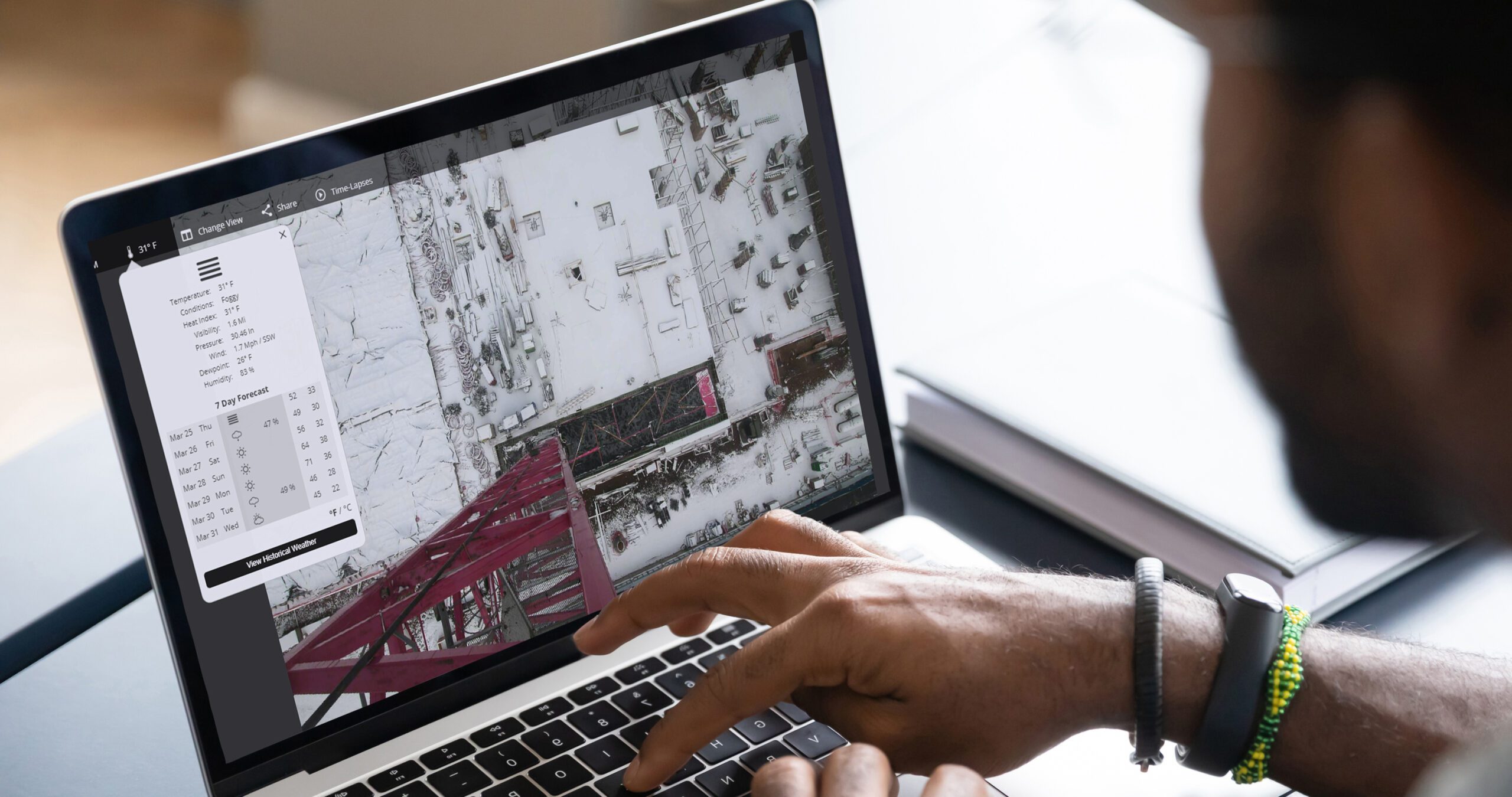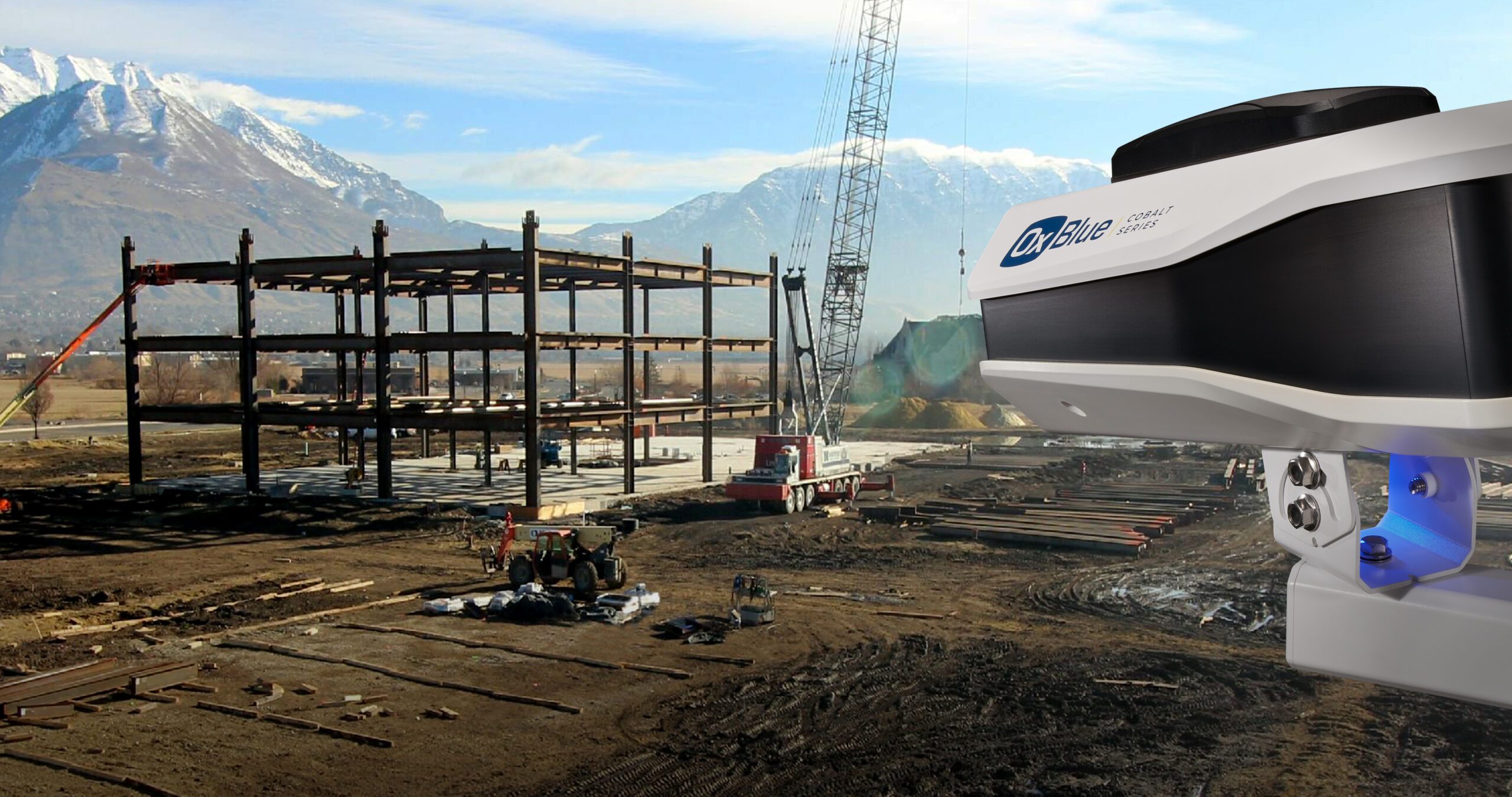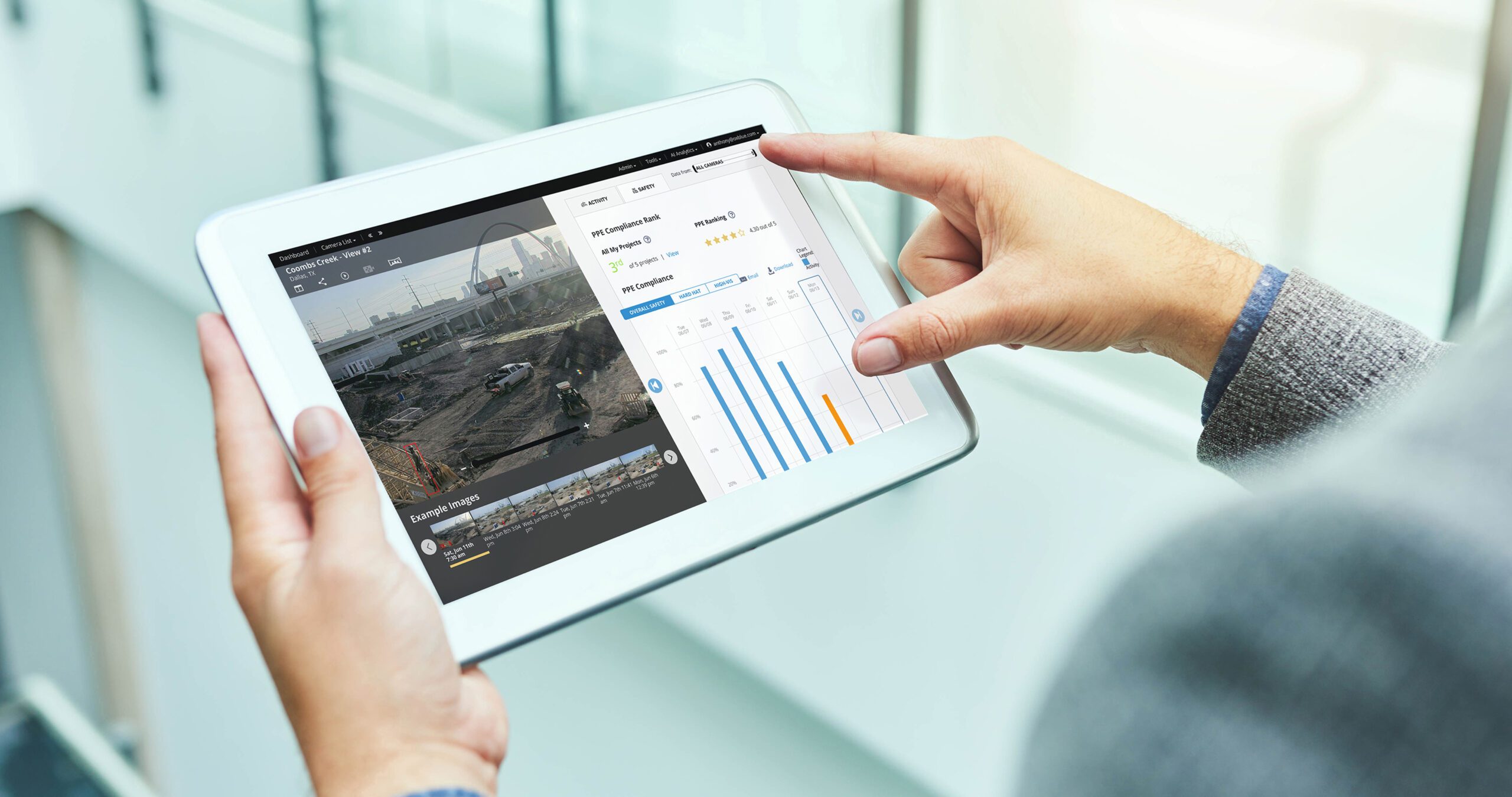Hardware Update: The Evolution of Construction Cameras

By consistently measuring site activity over time, industry professionals have access to insights that will inform future planning.
By Chandler McCormack
The power of an image is well established. Images and video are an unbiased source of truth; capturing views of time that human memory can’t reliably recall. For decades, leaders across all industries have used photos to see, understand and act upon insights appropriately.
Yet the information within an image isn’t always so evident. Although technology has rapidly evolved—from WiFi to Bluetooth to smartphones and beyond—there are many data points within a photo that are still untouched and unexplored.
While many industries have focused on facial recognition through image analytics, and artificial intelligence (AI) systems can now generate images with just a few prompts, actually unlocking the mountain of information in a photo still is a challenge.
- How do you understand what’s happening in one snapshot of time?
- How do you reveal the history of that time?
- How do you begin to see the circumstances behind the photo?
In the construction industry, photo documentation is a natural and deeply embedded part of the job. General contractors, owners and developers all have a need for visibility so they can take the correct actions at the proper time. But what was previously just a form of recordkeeping now is a crucial part of managing, monitoring and marketing jobsite success.

Clients can see the correlation between labor hours and weather hazards.
Clear Visuals Are a Timeless Solution
Before high-speed internet, plugging into the jobsite was exceptionally limited. Webcam views could only offer a 320- by 240-pixel video stream, but this view was—and still remains—essential. When construction begins, sharing information doesn’t stop with just the team onsite. General contractors must coordinate with architects and engineers. Developers need to set schedule expectations for investors. Owners need to ensure their investment is secure.
In the late 1990s, the challenge was about sharing live visuals clearly and quickly. Dial-up connections reigned supreme, a dreaded option that clogged phone lines and took substantial time to transmit. Images would load pixel by pixel, line by line, excruciatingly slowly. Construction camera providers had to build out servers and call lines, so instead of turning off phone lines for a few hours, construction teams could find a camera service provider that could buffer the data through a 1-800 line.
When the first construction cameras came online in the early 2000s, it was an attempt to deliver real-time information to jobsite stakeholders, fast. It was a way to finally “keep the record straight.” It also was the beginning of automated documentation. Images included metadata, a key piece of information that automatically sourced the date and time of a photo’s creation.

Construction cameras have grown from a silent sentry on the jobsite to a key tool in a project-management system.
Construction professionals could review jobsite changes and filter those changes by date and time. Now photos could be tied together to create time-lapses of progress. In 30 seconds, clients could see the history of their jobsite in detail.
But metadata was easy to change or remove entirely. Simply saving an image from one camera to another computer desktop could wipe out the photo’s digital history. The data tied to images still lacked significant context: What was the weather like throughout the day? What else could be pulled from an image and used to make decisions? What did images contain that wasn’t easy to see on the surface?
By 2012, construction cameras grew from a silent sentry on the jobsite to a key piece of a functional project-management system. Cameras now were able to:
- Make it easy to access one or more projects from anywhere and on any device
- Deliver unbiased, unfiltered documentation to mitigate risk and rework
- Share real-time project status to all team members
As computer and cellular systems advanced, so did the camera. Technology began to help unravel the data points within every image. Weather data and precipitation levels were time-stamped and marked appropriately. Optical zoom became a powerful means to explore detail on a live camera feed. Simply being able to click into a project and understand what was happening during the last day, week, month or entire lifecycle of the work was game-changing. Changes within a camera were driven by megapixel optimization, video stabilization, advanced zoom and robotic control from all devices.
What was important by the late 2010s was maintaining sharp, ultra-clear insight into the jobsite’s progress. Camera providers began to find ways to fix literal visibility issues, such as if there was dirt on the lens or if the view had become tilted. It was important to deliver construction cameras that clients could “set and forget,” focusing only on seeing the real-time details of a job come to life on their screens.
Then the pandemic hit.
Artificial Intelligence Adds Breakthrough Management Control
Visibility shifted from being about understanding day-to-day construction progress to understanding what was happening across the country. At OxBlue, we stood on the vanguard of using visual data to see reality during an unprecedented time. We started our journey into using AI to manage our own internal support service. It was important to give our clients peace of mind that camera management was under control by their trusted provider.

Construction teams now can monitor if safety concerns have passed a certain threshold and require attention.
A construction camera typically captures 25,000 images during the year it’s positioned onsite. Those image collections, partnered with AI, turned the construction camera from a device for decision making now into a tool offering invaluable context for reflecting and improving in the future.
The camera, in addition to the AI solution, created an invisible force; a level of engagement akin to having the whole team onsite at all times. Real-time vision removed the need to wait for quarterly reports to assess the impact of the pandemic on the construction industry; the images, bolstered by AI, showed where there were slowdowns and where activity was spiking.
AI began to unravel the context within jobsite images and videos. Activity data came first, then safety information regarding hardhats and high-visibility vests. A more- complete picture started to emerge. Now clients could see the correlation between labor hours and weather hazards. AI could “review” images and pinpoint the objects within them. Instead of sifting through months and years worth of data to understand how often equipment was being used—or which teams were more operationally efficient—AI could serve information on a platter in an easy-to-read format.
This type of photo review by AI is still relatively new. While Google images came to life in 2001 due to Jennifer Lopez’s infamous green dress, the search giant can’t use those images to tell you how many people were in attendance to see her or how long they stayed for her red-carpet walk. Other recent innovations, such as DALL-E, are focused on serving up information based on a user’s query, rather than compiling that photo information on your behalf.
Construction cameras with AI now can provide a level of insight and awareness that’s impossible to achieve single-handedly. With AI reviewing images, it becomes easier to answer big questions
- What factors are driving delays on the job?
- Where are resources being underutilized?
- Are my suppliers fulfilling their promises?
- When and where did our equipment arrive?
- Did last weekend’s storm impact progress?
- Are things going according to plan?
The Evolution of Camera Images Is the Evolution of Efficiency
AI has revealed data that allow general contractors, owners and developers to monitor the day-to-day with ease; but, more importantly, they provide context and insight.
Images aren’t just a matter of seeing a snapshot of time, but part of weaving together the situation and circumstances behind the photo. Whereas before, photos could be used to check in on progress, they’re now a source for driving change. Visibility is valuable on its own, but understanding alongside such visibility will determine the future.
By consistently measuring site actions and activity through time, industry professionals have access to deep insight that will inform future planning. Cameras now can be a measure of “stress testing” for the unexpected.
They can help answer questions such as the following:
What does it mean if team A can deliver a final product in record time, but they also have more safety violations than team B, which consistently delivers a week past deadline? How different is life on the jobsite knowing equipment rentals only have a utilization of 30 percent over a span of a few days, instead of the assumption they were needed 100 percent of the time? Understanding what key conditions look like, or what consistently gets in the way, means knowing how fast your team can turn things around or what needs to be avoided in the future. These data points all can be essential diagnostic tools to help make the most-effective changes.
We’ve Only Scratched the Surface
AI is still in its infancy. But even so, what’s happening today is beyond promising. Construction teams can now know if there’s low activity onsite for two days in a row without checking. They can now monitor if safety concerns have passed a certain threshold and require attention. AI can even look for motion and send an alert to a security team to dispatch authorities.
The full potential of AI is yet to be released, and yet cameras with this technology can already perform the following:
- Quickly verify jobsite activity, equipment delivery and material use
- Report findings that highlight when something onsite needs your attention
- Support compliance of evolving safety, health and regulatory standards
While there is more to come, we know one thing for certain: This consistent collection of data will help us all understand how to create consistent results and do so more efficiently than ever before.


